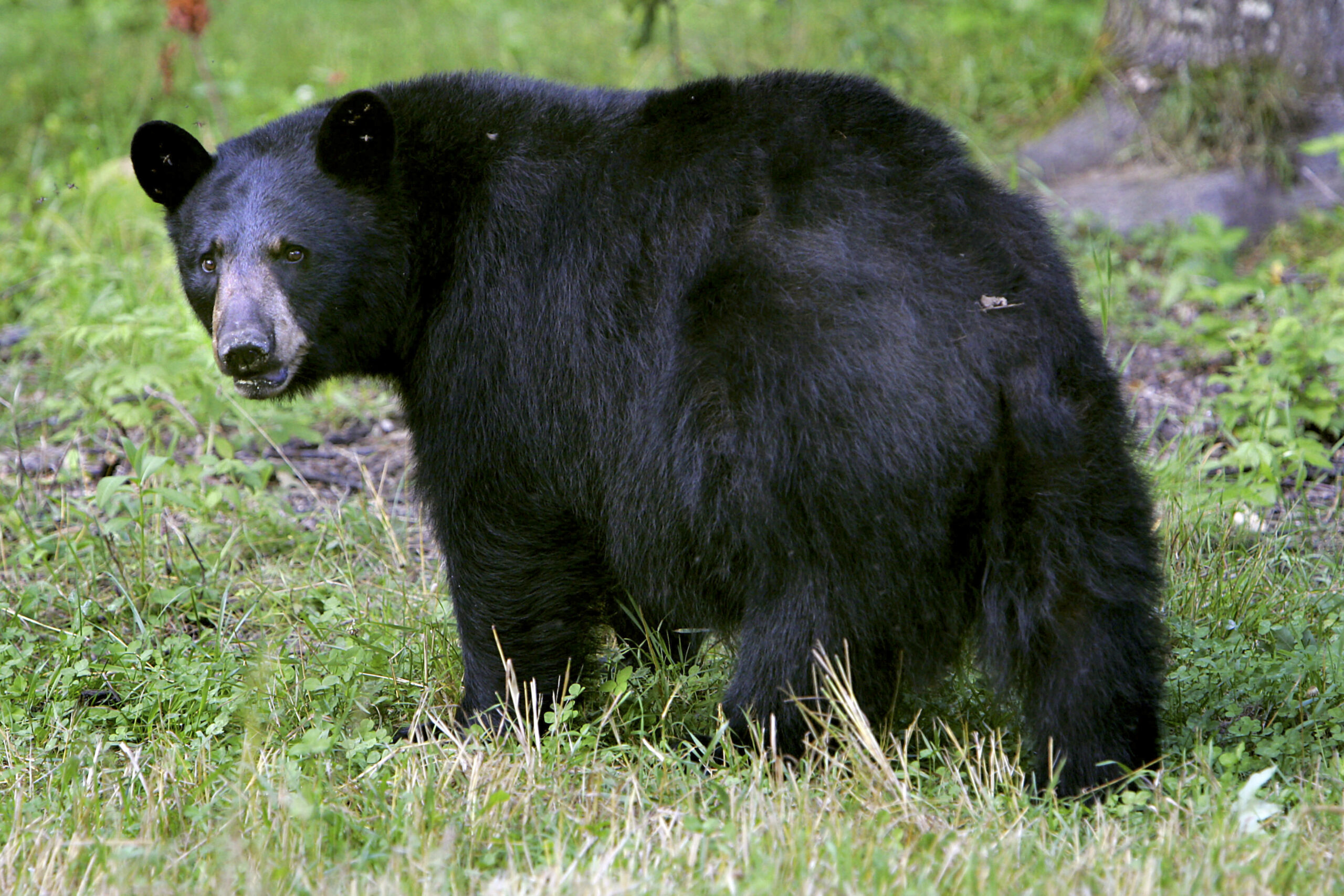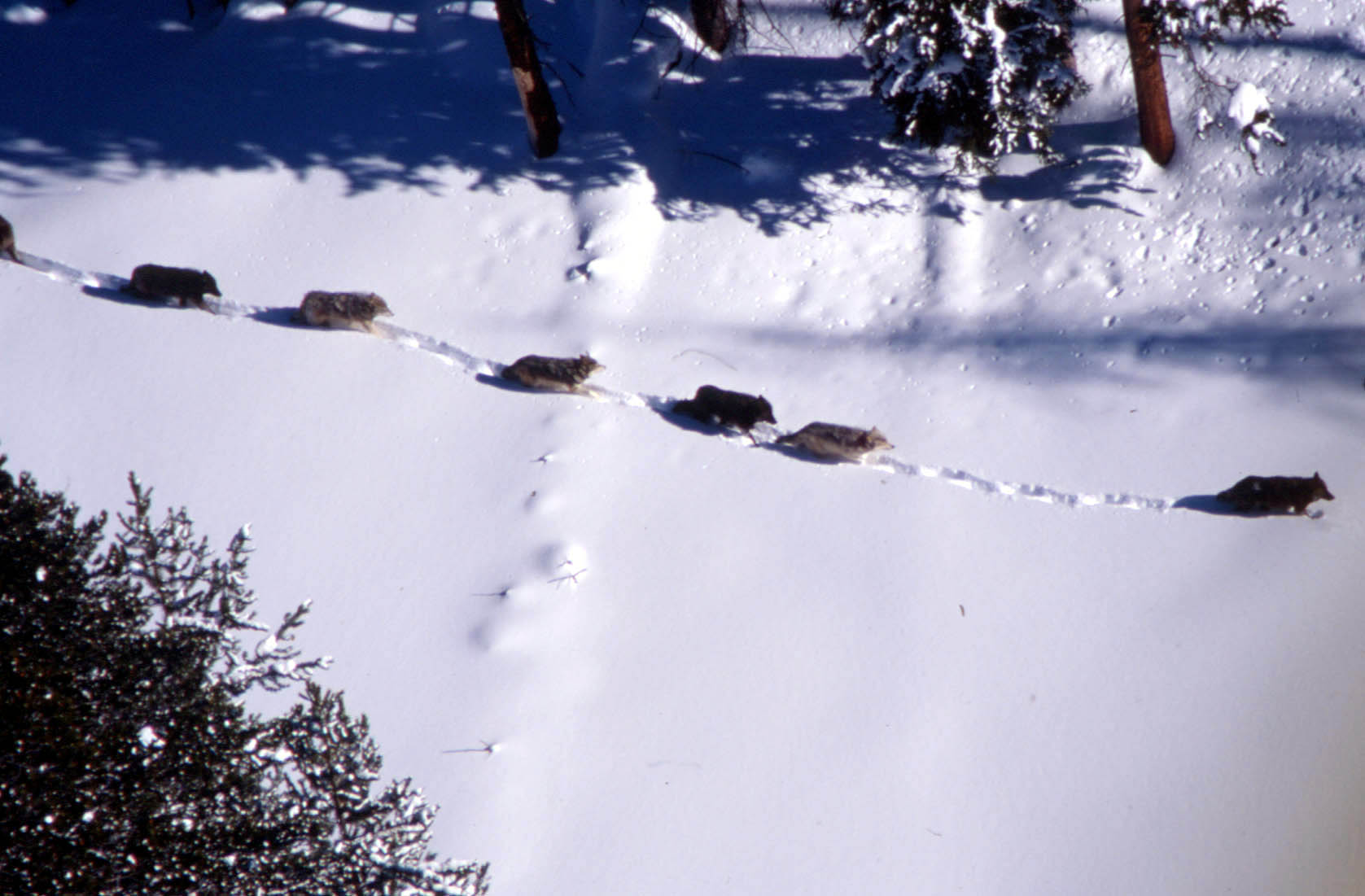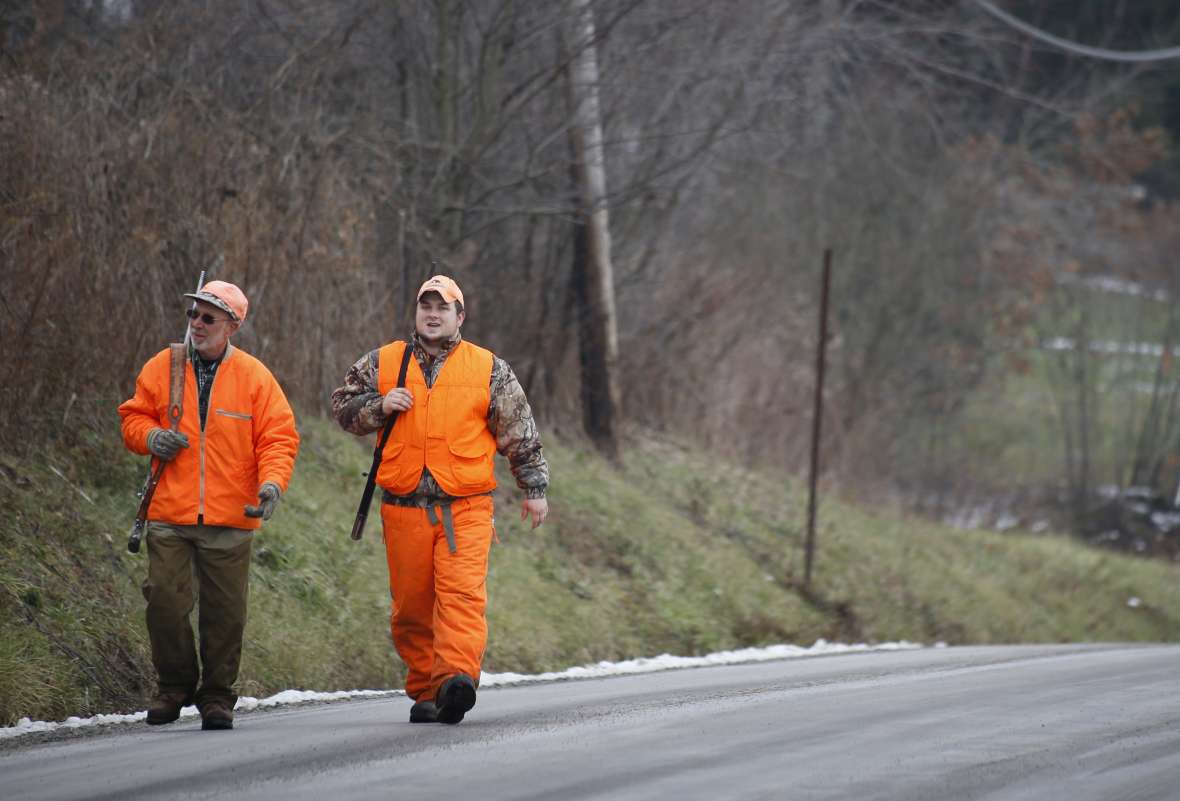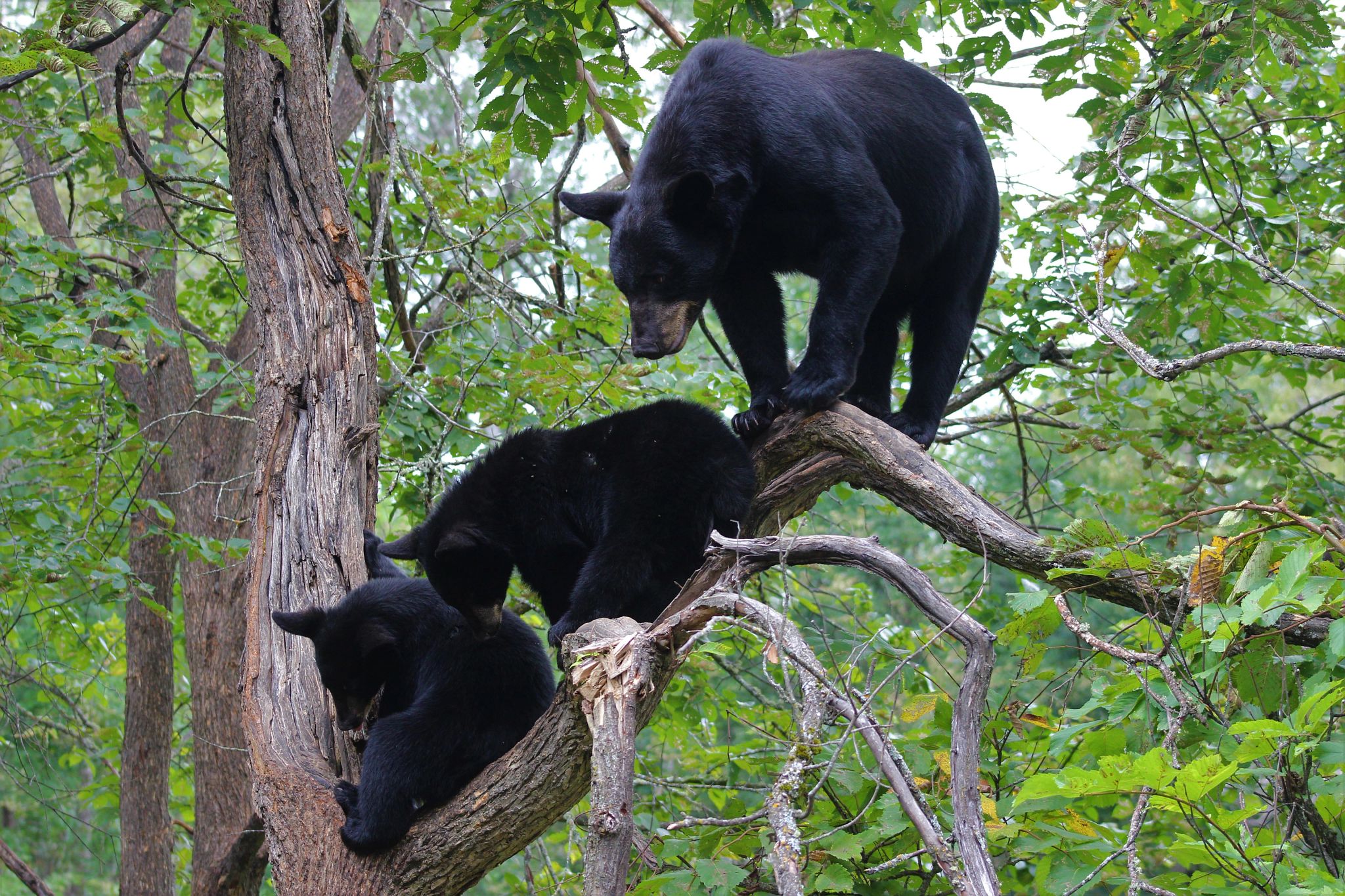Hunters will have more opportunities to harvest black bears this fall.
The Wisconsin Department of Natural Resources will allow hunters to kill up to 4,575 bears — up about 1.7 percent from last year’s quota. The agency is also issuing 12,760 licenses this year, which is an almost 5 percent increase from last season.
The Wisconsin Natural Resources Board recently approved the changes at its Jan. 25 meeting. The DNR estimates Wisconsin has about 26,000 bears statewide, which is nearly three times the state’s population in 1989. State-licensed hunters typically kill around 4,000 bears each year.
Stay informed on the latest news
Sign up for WPR’s email newsletter.
DNR Large Carnivore Specialist Randy Johnson told the board that demand for bear hunting licenses has been on the rise. Last year, the agency saw record high interest with more than 136,000 applications for a license or preference point.
“That actually bucks the general trend you see in hunting in the state and across the country where interest and participation seems to be on the decline. Bear hunting is the opposite. It’s increasing demand, increasing participation, which is good,” Johnson said.
Even so, he noted that’s presented challenges where some hunters may have to wait up to 12 years to get a license depending on where they choose to hunt.
The agency determines the numbers of licenses and harvest targets for each of the state’s six bear management zones. The six hunting zones were established as part of an updated black bear management plan, and the new zones took effect in 2021.
The increased licenses and quotas received support from the DNR’s bear advisory committee and the Wisconsin Conservation Congress, or WCC.
“WCC feels the permit levels recommended are appropriate given the goals, current population estimates and success rates identified utilizing the best available science,” Wisconsin Conservation Congress Chair Rob Bohmann told the board last week.
The DNR recommended maintaining or increasing the bear population in four of the six hunting zones with the exceptions of zones D and F.

The agency aims to allow local control of the population in Zone F across southern and eastern Wisconsin. At the same time, the DNR wants to decrease the bear population in Zone D.
Zone D spans counties in northwestern Wisconsin that have had more complaints related to bears damaging crops. Johnson said about half of all bears captured and relocated last year came from Sawyer and Rusk counties within that zone.
Hunters have killed far fewer bears than the zone’s quota of 1,800 bears. Even so, the DNR said there are signs the population may be stabilizing or declining. While the quota remains the same, the agency is increasing the number of licenses there by nearly 10 percent this year.
Luke Withrow with the Wisconsin Bear Hunters’ Association said during a DNR bear advisory committee meeting broadcast by WisconsinEye in November that hound hunters don’t want to see as many bears harvested in Zone D.
“They’re having trouble finding quality bears, and it’s a small area … They would like to back off a little bit there,” Withrow said. “It’s just there’s a lot of people hunting there. And there’s definitely less bears than there was at one time. So, some of them are very happy, and then some of them, you know, they’re getting overrun with tags.”
Withrow declined to comment about changes to quotas and licenses Thursday.
Last year, hunters killed 4,110 bears, which was under the state’s overall harvest goal of 4,500 bears. Johnson told the Natural Resources Board that’s on par with the 10-year average. Even so, he said three of the state’s six zones went beyond their harvest targets.
John Johnson Sr., tribal president for the Lac Du Flambeau tribe, said Ojibwe tribes have voiced concerns about state-licensed hunters exceeding the DNR quota for bears in northern Wisconsin zones.
“I would like to see that the numbers that they do harvest are actual,” Johnson said, “I’d like to see that the zones that they’re taking these bears from are shut down when their quotas are full instead of the overharvesting in ceded territory.”
The Great Lakes Indian Fish and Wildlife Commission has said tribal hunters kill around 40 bears each year on lands outside their reservations. As a member of the bear clan, Johnson said he doesn’t eat bear meat, but he noted some tribal hunters from other clans use the meat for sustenance.
Charlie Rasmussen, a commission spokesperson, said Ojibwe tribes have long been concerned about overharvests of black bears during the state’s season.
“Tribes are held to a high standard in documenting their take of fish & wildlife. GLIFWC authorities quickly close seasons when quotas are reached. Tribes would appreciate an equivalent level of accountability from the state,” Rasmussen said in an email.
Lac du Flambeau’s tribal president said tribes don’t want overharvesting to drive the population down to unsustainable levels. During the November meeting, the DNR’s Randy Johnson said it’s worth examining when the department may close zones.
Looking ahead to the fall, harvest goals in each of the state’s six hunting zones will remain the same as last year with the exceptions of zones B and F.
The quota in Zone B, which covers far northeastern Wisconsin, will increase slightly from 800 last season to 850 this year as hunters have shown significant demand for hunting opportunities.
Zone F spans mostly southern and eastern Wisconsin and contains very little habitat that’s suitable for bears. The agency increased the quota from 25 to 50 bears in an area that sees an average harvest of 19 bears each year.
Wisconsin Public Radio, © Copyright 2025, Board of Regents of the University of Wisconsin System and Wisconsin Educational Communications Board.



